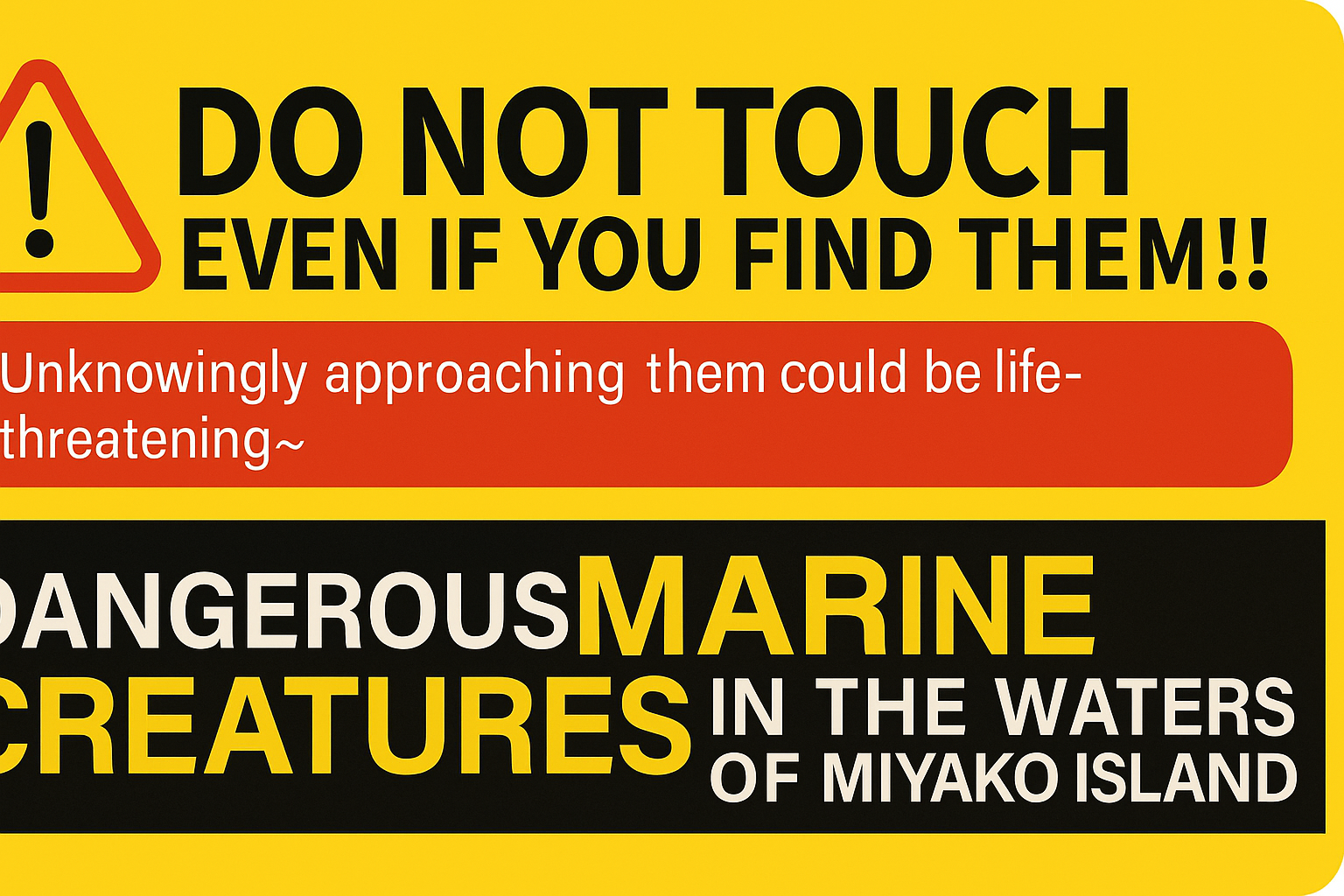
Dangerous Marine Creatures in the Waters of Miyako Island
Unknowingly approaching them could be life-threatening
The crystal-clear seas of Miyako Island harbor not only beauty, but also deadly creatures. During snorkeling or diving, accidental contact can lead to serious injuries or even life-threatening conditions. Learn about these dangerous creatures in advance to enjoy the ocean safely.
🔴
Crown-of-Thorns Starfish
Beware of venomous spines! A harmful species that feeds on coral
Touching its venomous spines can cause severe pain, swelling, nausea, and dizziness. Never handle with bare hands—keep your distance.
📏Features: Grows up to 30cm in diameter, reddish-purple body with sharp spines
🧯First Aid: Soak the affected area in hot water (40–45°C) for about 30 minutes
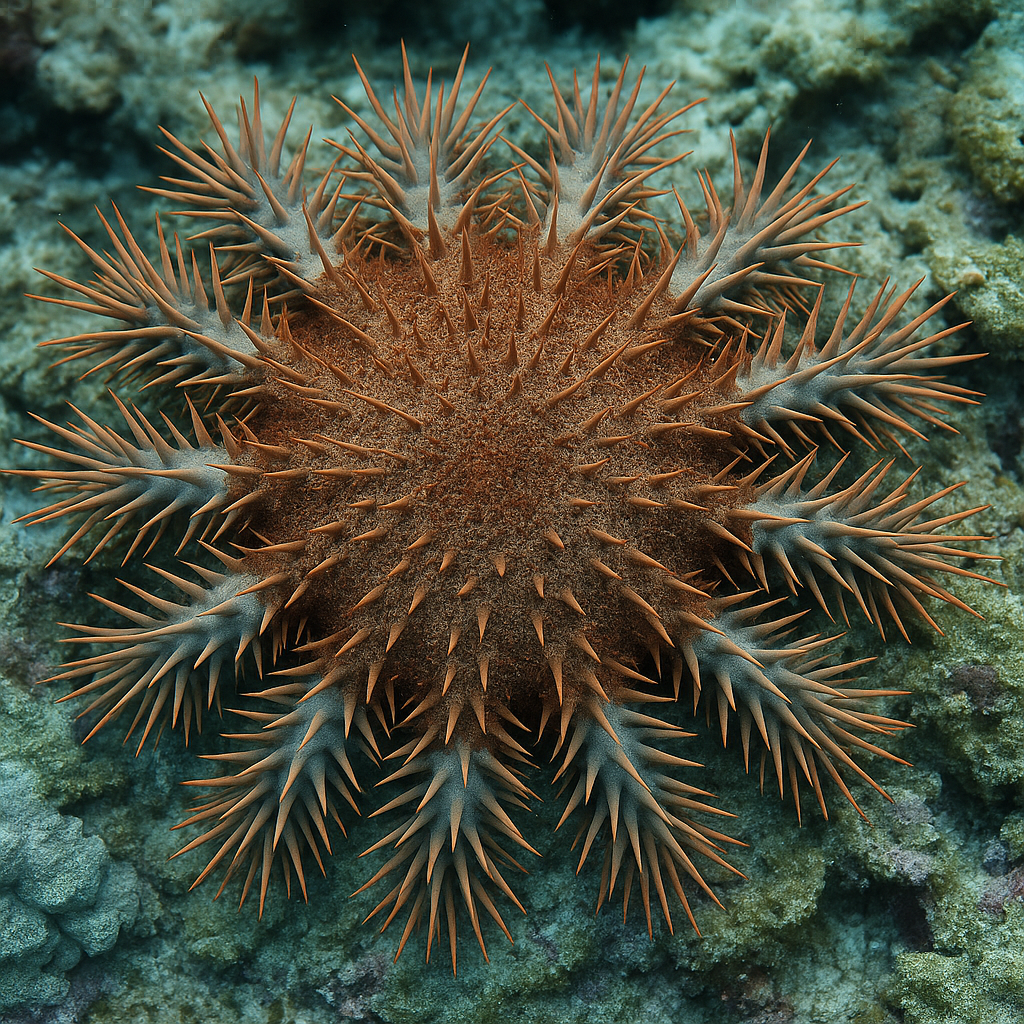
⚠️
Box Jellyfish
The most dangerous jellyfish in Okinawa!
Its sting causes severe pain, skin damage, breathing difficulty, and even shock. Especially common in summer.
📏Features: Transparent bell with long tentacles
🧯First Aid: Pour vinegar on the sting, carefully remove tentacles, and go to a hospital immediately
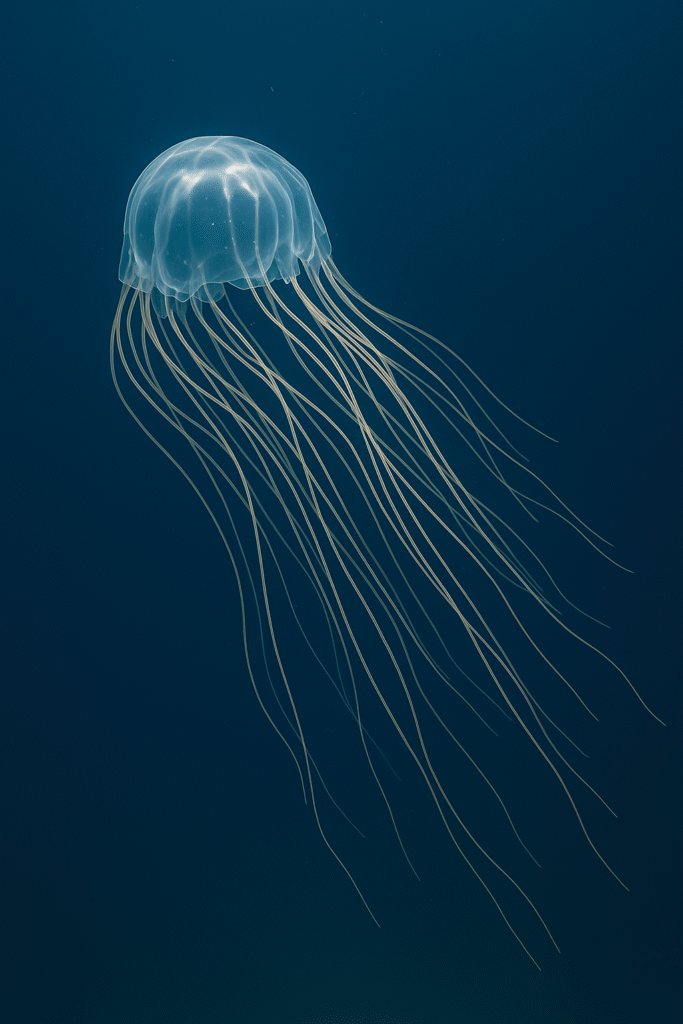
🦠
Portuguese Man o’ War (Bluebottle)
A venomous jellyfish that delivers electric shock-like pain
Drifts in from offshore. Causes intense pain and swelling, and can trigger anaphylaxis.
📏Features: Blue floating gas bladder with long trailing tentacles
🧯First Aid: Remove tentacles, rinse with seawater, and seek medical help promptly
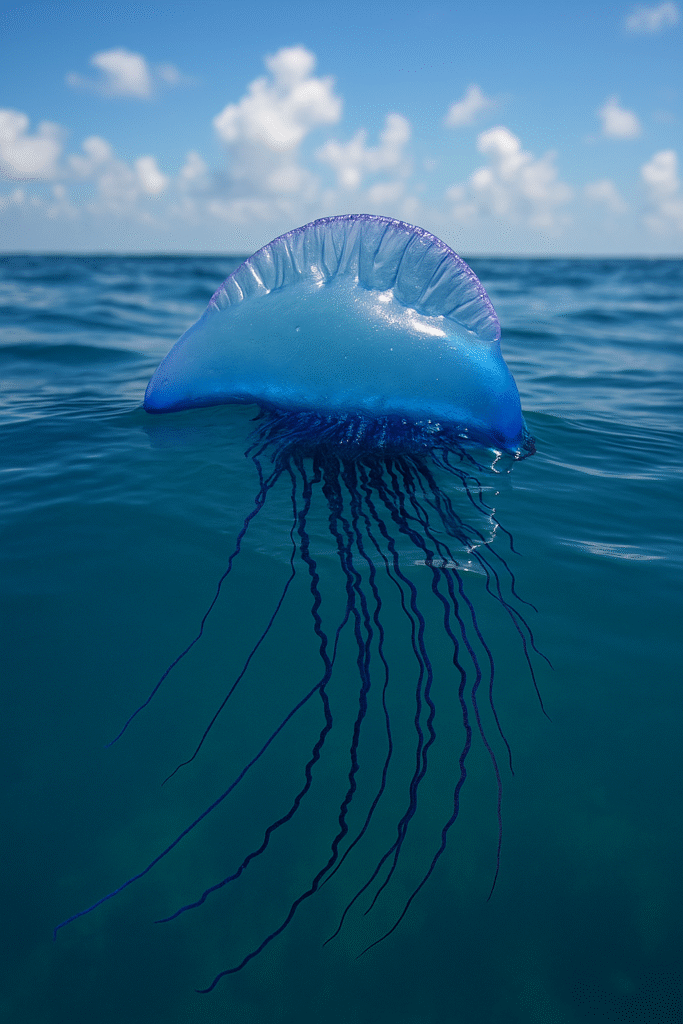
🌿
Long-Spined Sea Urchin (Diadema)
Sharp black spines—watch your step!
Stepping on it can cause spines to break off and remain inside the skin, leading to inflammation and pain.
📏Features: Long, black, needle-like spines
🧯First Aid: Soak in hot water as for Crown-of-Thorns Starfish

🟤
Stonefish
Nicknamed “the landmine of the sea”
Camouflaged on the seafloor and equipped with highly toxic dorsal spines. Stepping on it can cause extreme pain and even shock.
📏Features: Up to 40cm, rough brown appearance resembling rocks
🧯First Aid: Warm the affected area and seek urgent medical attention
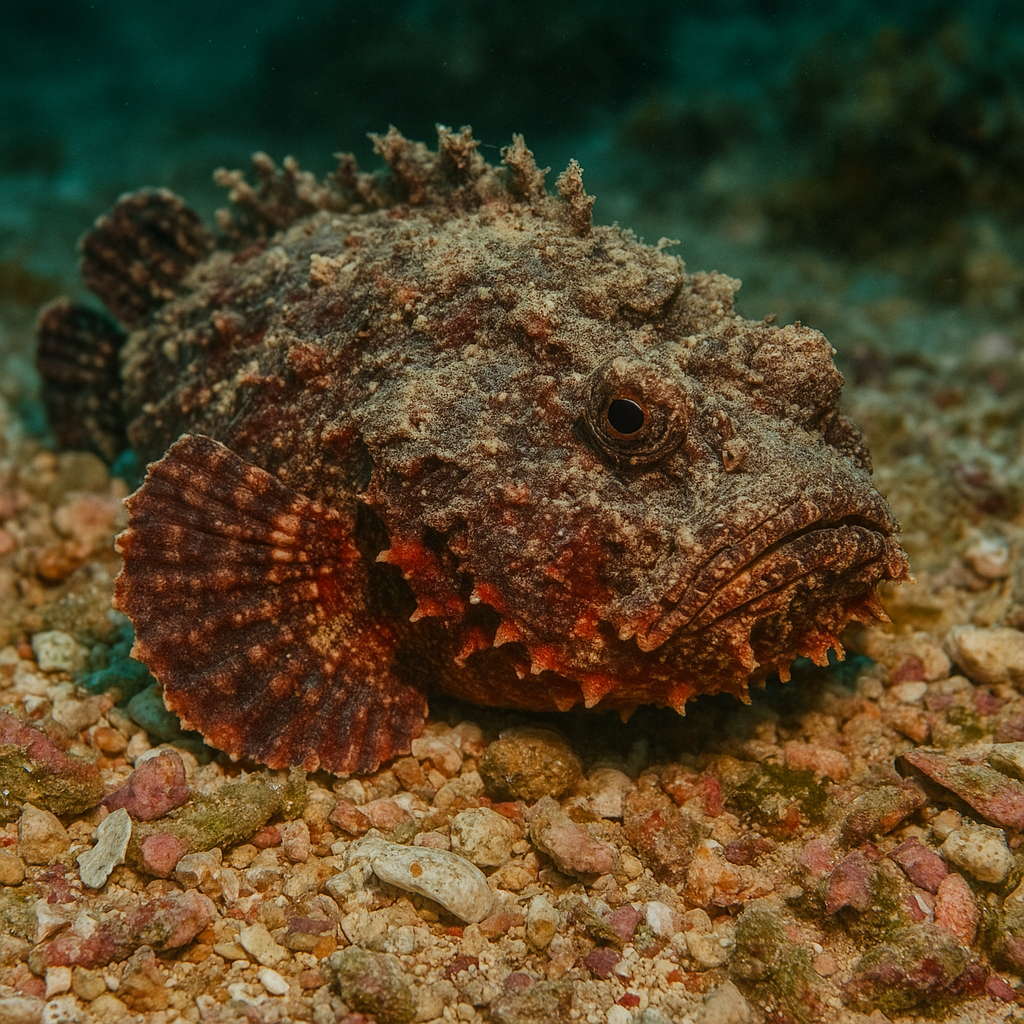
⚫️
Striped Eel Catfish
Toxic spines on dorsal and pectoral fins!
Often seen in schools. Can cause severe pain and swelling if touched during fishing or tide pooling.
📏Features: Whiskered fish that swims in lines
🧯First Aid: Immerse in hot water; go to hospital if symptoms worsen
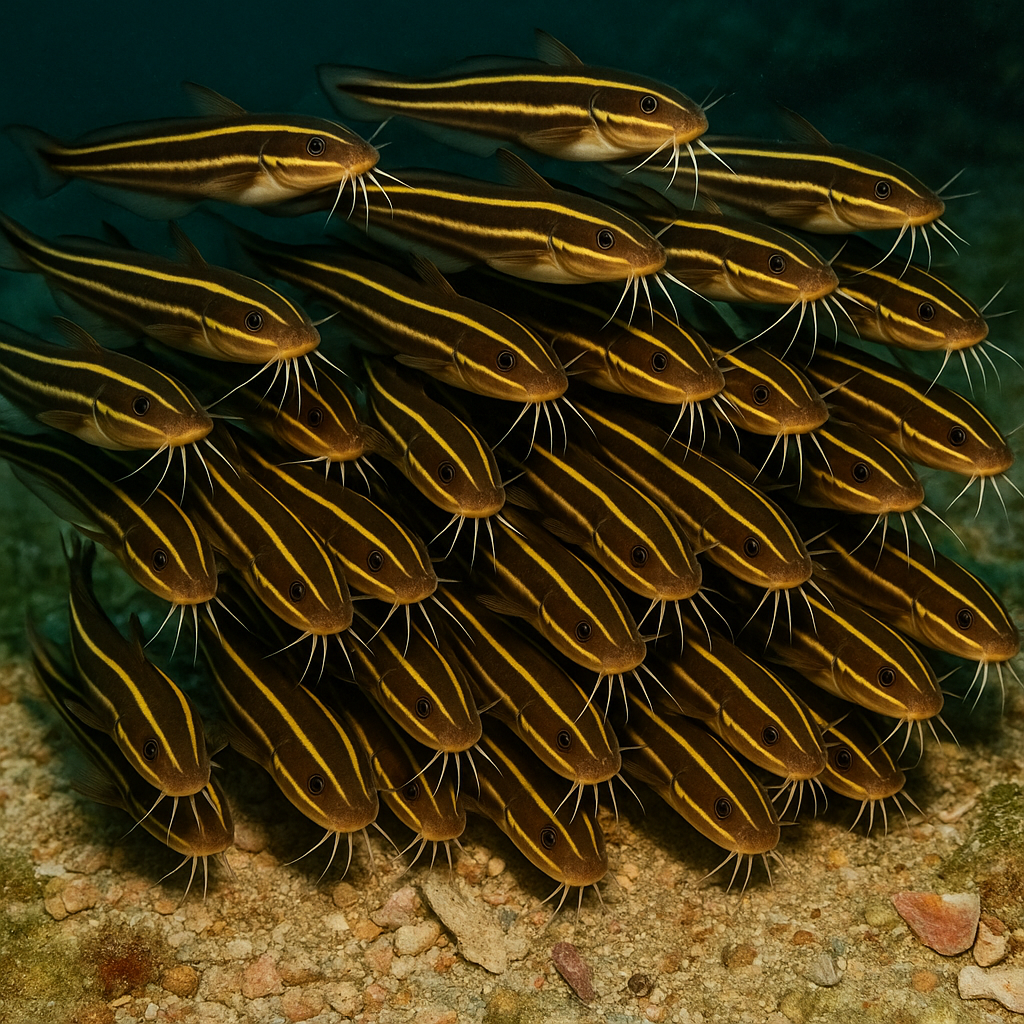
🐍
Sea Kraits (Sea Snakes)
Highly venomous but rarely aggressive
They usually do not bite unless provoked. Best to observe from a distance.
📏Features: Distinct black and white bands; moves slowly underwater
🧯First Aid: Seek immediate medical care if bitten

🪸
Fire Anemone
Even light contact can deliver a powerful sting
Can cause severe pain, swelling, and difficulty breathing. Often hides among rocks or tidepools.
📏Features: Plain appearance, lives in shallow rocky areas
🧯First Aid: Rinse with vinegar or seawater; seek medical attention right away

🐚
Cone Snails
One of Okinawa’s most dangerous marine creatures—fires a venomous harpoon
These small, beautiful snails can inject a potent neurotoxin that causes paralysis and respiratory failure. Fatal cases have been reported.
📏Features: Glossy, colorful shells; slow-moving
🧯First Aid: Go to a hospital immediately—CPR may be required
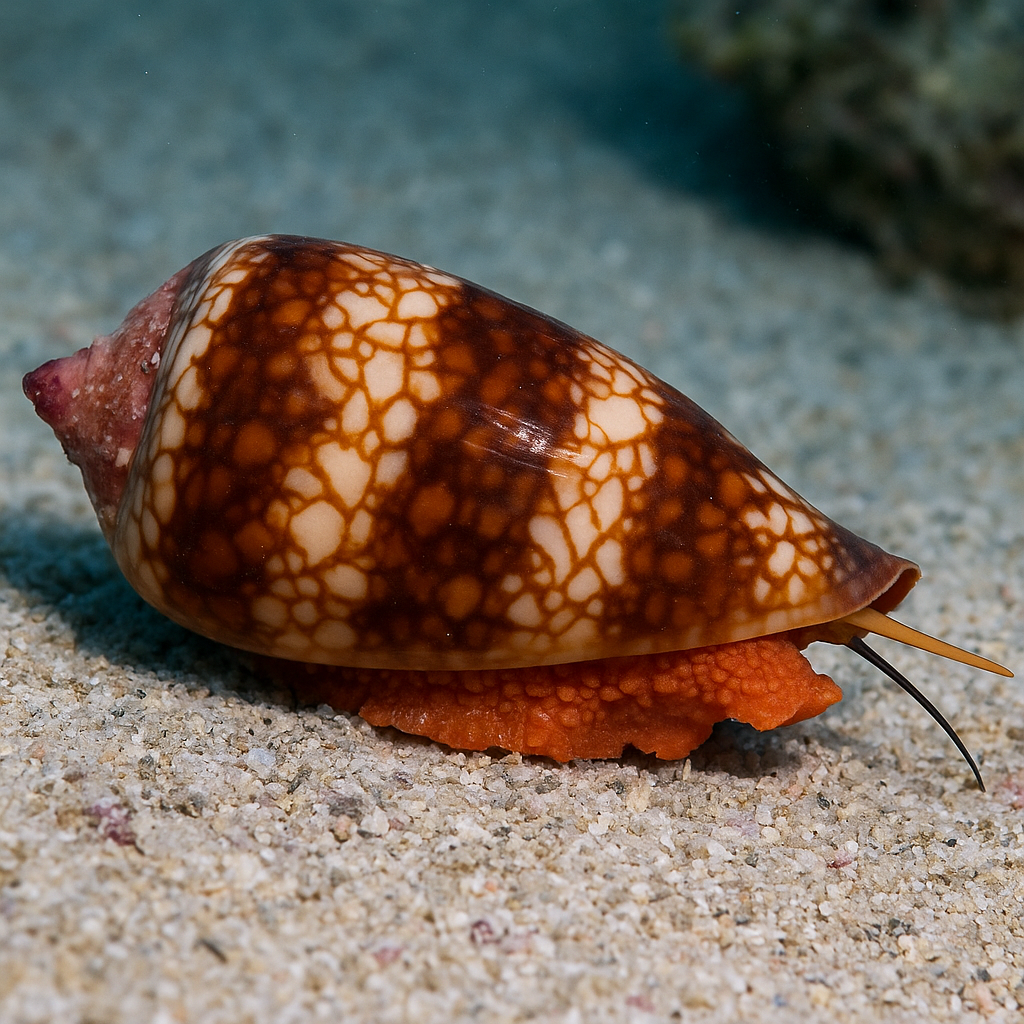
🚨
6 Safety Tips to Protect Your Life in the Ocean
1️⃣ Never touch marine life, even out of curiosity
2️⃣ Wear marine shoes and rash guards
3️⃣ Keep your distance from unfamiliar sea creatures
4️⃣ Swim only in designated areas with safety nets
5️⃣ Learn basic first aid for marine injuries
6️⃣ Pay special attention to children and inexperienced swimmers
🔵From the Editorial Team
To safely enjoy the beautiful seas of Miyako Island, knowledge and proper manners are essential. Stay aware of these dangerous species and create unforgettable island memories—safely.






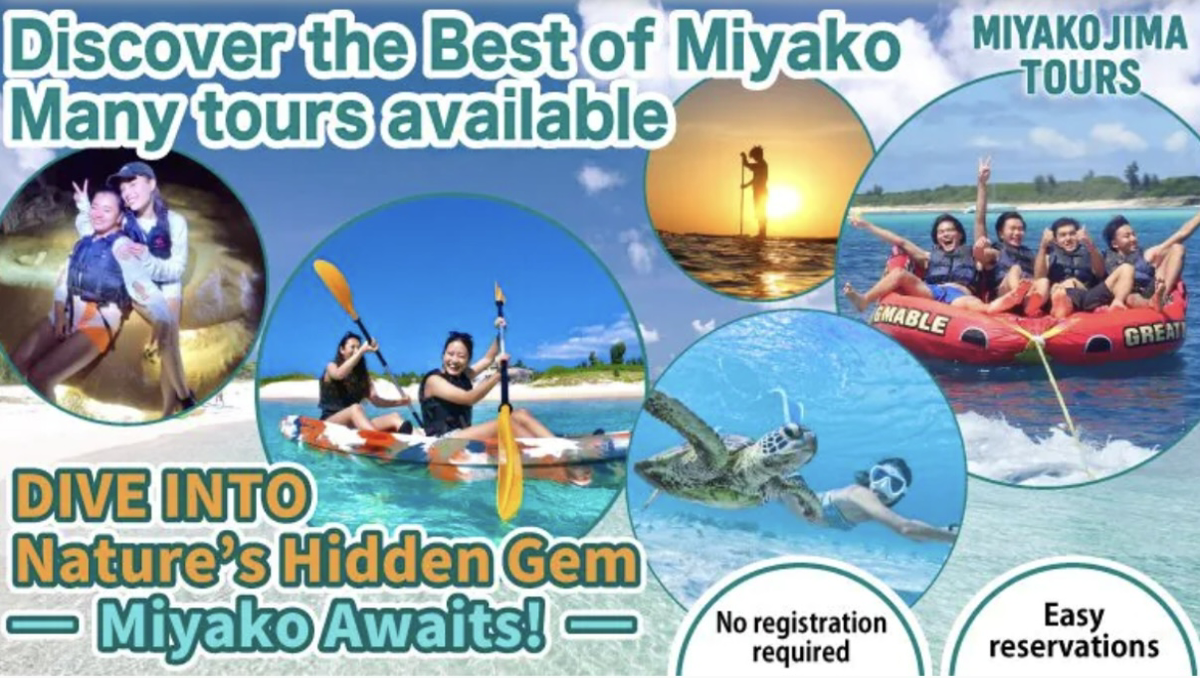

最近のコメント